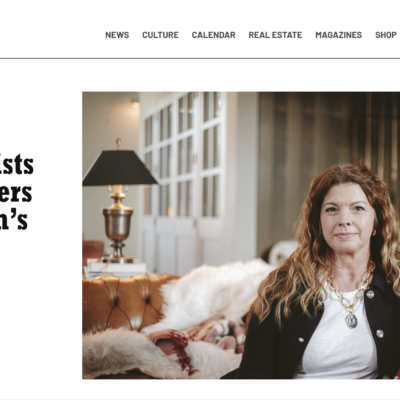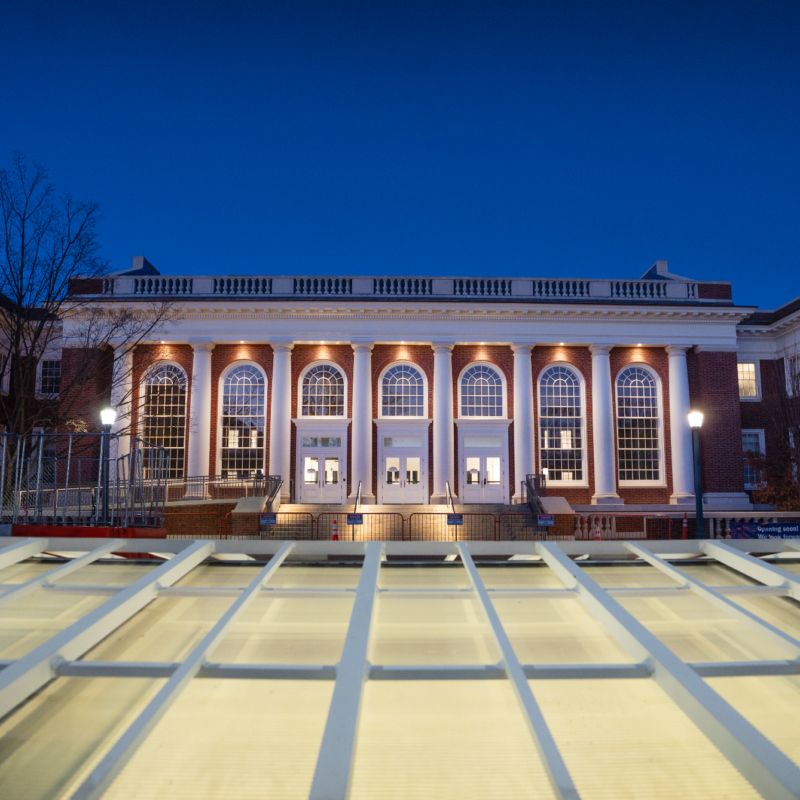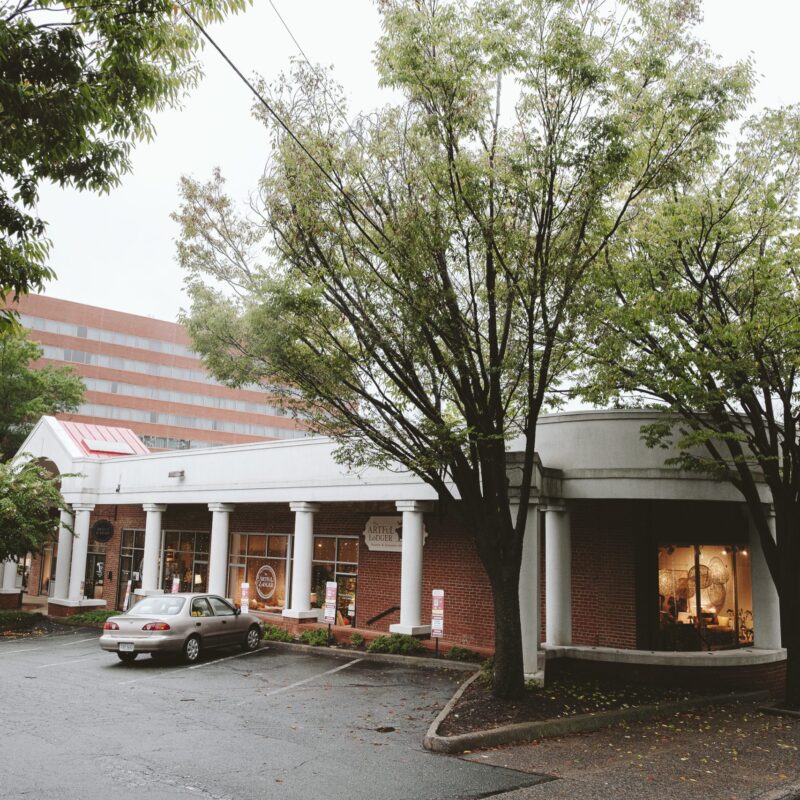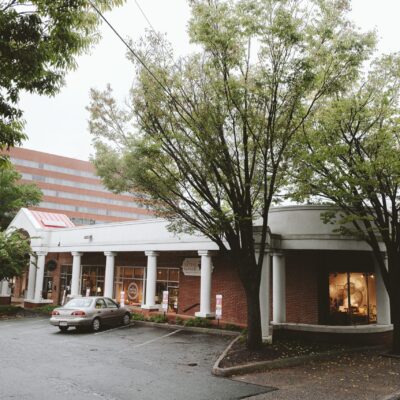|
The City Market opened for the season on April 7. It runs from 7am to noon every Saturday through November. |
We watched kids moving inside the bellies of their pregnant mama goats this week. Of our two does, one is clearly wider in the middle, so I laid my bet on her having twins. The other is having a singleton. So say I, from my position of total inexperience.
It’s exciting to have livestock, but we’re only a few weeks into it and I am way out of my depth. For example, there’s the small matter of these upcoming births. When the kids enter the world, we’ve been advised to be present—not to help the does birth, which they can do on their own, but to rub our shirts on the noses of the kids to imprint them with our scent.
O.K., great. But goats don’t labor very long—we were told it takes about 15 minutes. So how am I supposed to make sure I’m around? And will the new mamas actually let me get that close to their wet, wobbly babies?
We’ll find out. I didn’t used to know how to pick up a chicken, but I’ve learned. There’s a way of being with animals—somewhere between tender and harsh—that farmers all over the world seem to know. It’ll come with experience and probably a few mistakes.
It was amazing, watching those babies kick inside their mothers. As the does stood in front of me, briskly munching vines, their sides fluttered and rolled. Soon, all will be revealed.—Erika Howsare
Institutional locavores
We’ve all experienced cafeteria-style dining: unidentifiable meats, mushy colorless vegetables, processed desserts. But schools, hospitals, nursing homes, and other institutions may be on their way to fresher, healthier menus with local ingredients.
The Piedmont Environmental Council hosted two workshops in Charlottesville in February and March entitled “Farm to Food Service,” where professionals gathered to talk local food sourcing, budgeting and preparation for institutional menus.
“We’re all in this thing together,” said Mike Curtin, Executive Director of DC Central Kitchen, which turns leftover foods into meals for at-risk individuals while providing culinary experience for previously homeless or hungry adults. Curtin said 40 to 60 percent of produce does not make it off the farms, and the willingness of institutions to accept less-than-perfect fruits and vegetables is vital to the local food movement.
He compared photos of cucumbers found in a grocery store to misshapen cucumbers of varying sizes. While the smooth, uniform vegetables may be more appealing, he asked, who will know the difference once they’re cut up for salads? Grocery stores may never accept such imperfect produce, but smaller institutions can reduce waste and incorporate local foods by claiming these leftover fruits and vegetables for their kitchens.
Bekah Morris is the executive chef at Village at Gordon House, an assisted living facility in Gordonsville. “Incorporating local foods, being more environmentally friendly, and leaving less of a footprint is something that I personally am interested in,” she said. As someone who cooks for over 30 people every day, Morris wants to add variety and nutrition to her menus.
Many of Morris’s experiments—like chicken quesadillas—have gone over extremely well. Seasonal lettuces and cabbages have made their way into residents’ salad bowls, too.
Harris said her first step was to meet with the Garden Patch in Orange County, a shop that sells plants and produce straight from the Patch’s own farms. Harris said she plans to keep in contact with the Patch regarding what produce is available and when.
“We live in an agricultural community,” Harris said. “And it just makes sense.”—Laura Ingles
|
BULLETIN BOARD High flying: Nelson County’s Kite Festival, presented by the Rockfish Valley Foundation, hits the skies in Nellysford on April 15. It’s free, and includes everything from duck races to kettle corn and (of course) kite flying. The RVF will also hold a stargazing event on April 14. Call 361-1296 for more info. Bring them back: On April 7, volunteers for The American Chestnut Society helped to plant 400 chestnut trees in a “breeding orchard” in Crozet. The chestnut, once an important part of American forests, was nearly wiped out by chestnut blight between 1900 and 1940. Go underground: April 22-28 is Cave Week in Virginia. That means you can get into commercial caves for a discounted price and are Tap in: Charlottesville residents, show your civic pride by signing up for the Mayor’s Challenge for Water Conservation before April 30. The city is part of a nationwide contest |
The nature right here
Richard Louv, author of The Nature Principle, opened his talk at the Paramount March 15 with a sobering picture. Most adults, he said, tend to imagine the future as a post-apocalyptic world, with social, environmental, and political chaos. He shared with us an alternative vision—in which we re-wild cities and regenerate nature—and stressed the importance of connecting children and adults to nature to achieve this future.
How ironic, then, that our local environmental organizations, one of whom sponsored Louv’s talk, are leading us in the opposite direction. The unquestioned assumption of many pro-environment organizations and individuals is that we need to preserve and protect “nature.” Unfortunately, in this view, there is not a whole lot of nature in the urban area, as it has been paved over, killed, and polluted out of existence. Therefore, in order to preserve “the environment,” environmentalists promote development in the urban area’s remaining green spaces, and sprawl all around its edges. They call this “smart growth.”
I understand this perspective; I used to share it. I chose to live in the city, largely because I did not want to contribute to sprawl and be auto-dependent. I thought that the more people in the city, the better, as long as somewhere, out there, nature was protected. The problem is that I unconsciously took for granted that compact development would look something like Louv’s green future–that city parks would be sacred, that the city’s edge wouldn’t sprawl, and that access to nature would be understood and respected as a right of the urban dweller. A city that has room for both a lot of people and other nature, though, cannot be filled with cars, roads, and parking lots. Similarly, a city that can afford to regenerate its soil and water, and use green infrastructure, cannot spend its tax and utility revenue extending its road, sewer and water, emergency and other services further and further out.
The dogma that auto-dependent growth is inevitable has led, and continues to lead, to unseemly and counterproductive “compromises.” In an attempt to avoid a bypass in the rural area, local environmental organizations supported a road through Charlottesville’s central park. In an attempt to preserve rivers and steer sprawl as close to the city as possible rather than further out, these same organizations supported a new dam and reservoir in our forest park. These examples are representative of a prevailing attitude I’ve heard repeatedly from government and non-profit organizations and community leaders alike.
To care about the nature “out there,” city residents and their children need to experience it right here. I have spent countless hours and a lot of energy driving my children to parks or natural areas and supervising them there because there is nowhere to play outside my door, nor woods or streams (that aren’t dangerously polluted) within walking distance. Few people have the time or inclination to do this. Adults see a dark future because they know, at least subconsciously, that our current systems are unsustainable. Yet the very organizations we count on to protect our future are complicit in its destruction. It is time for a paradigm shift.—Joanna Salidis
_/IMG_0870.jpg)





